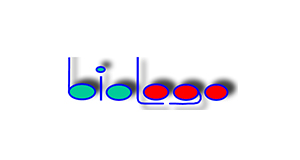CD15, human
CD15, human, IgM, Clone: MMA/LeuM1
Clone: MMA/LeuM1
Background: The antibody against CD15 CD15 is a helpful tool for the identification of Reed-Sternberg-Cells in Hodgkin's disease. Occasionally CD15 is exprimed also in large cell B- and T-cell lymphoma. CD15 or X-Hapten plays a role in mediating phagocytosis, bacterial activity and chemotaxis. It is present on >95% of granulocytes including neutrophils and eosinophils and to a lesser degree monocytes. It is also present on Reed-Sternberg cells and on some epithelia. Human CD15 (3-fucosyl-N-acetyllactosamine).
Positive Control: Reed-Sternberg cells in Hodgkin's disease
Immunogen: U937 histiocytic cell line
Purification Method: Antibody solution in stabilizing phosphate buffer pH 7.3. Contains 0.09 % sodium azide**. The volume is sufficient for at least 100 immunohistochemical tests (100 µl working solution / test). Use appropriate antibody diluent e.g. BIOLOGO Art .No. PU002.
Concentration: 50 µg/ml
References: 1. Skubitz K. et al. In: White Cell Differentiation Antigens. New York / Oxford University Press 1989; 800-805.
UniProt: P22083
Caution: *These antibodies are intended for in vitro research use only. They must not be used for clinical diagnostics and not for in vivo experiments in humans or animals. ** The preservative sodium azide is known to be poisonous and potentially hazardous to health. It should be handled only by trained staff. Despite of the product's low azide concentration it must be handled with care. Dispose according to regional rules!
Background: The antibody against CD15 CD15 is a helpful tool for the identification of Reed-Sternberg-Cells in Hodgkin's disease. Occasionally CD15 is exprimed also in large cell B- and T-cell lymphoma. CD15 or X-Hapten plays a role in mediating phagocytosis, bacterial activity and chemotaxis. It is present on >95% of granulocytes including neutrophils and eosinophils and to a lesser degree monocytes. It is also present on Reed-Sternberg cells and on some epithelia. Human CD15 (3-fucosyl-N-acetyllactosamine).
Positive Control: Reed-Sternberg cells in Hodgkin's disease
Immunogen: U937 histiocytic cell line
Purification Method: Antibody solution in stabilizing phosphate buffer pH 7.3. Contains 0.09 % sodium azide**. The volume is sufficient for at least 100 immunohistochemical tests (100 µl working solution / test). Use appropriate antibody diluent e.g. BIOLOGO Art .No. PU002.
Concentration: 50 µg/ml
References: 1. Skubitz K. et al. In: White Cell Differentiation Antigens. New York / Oxford University Press 1989; 800-805.
UniProt: P22083
Caution: *These antibodies are intended for in vitro research use only. They must not be used for clinical diagnostics and not for in vivo experiments in humans or animals. ** The preservative sodium azide is known to be poisonous and potentially hazardous to health. It should be handled only by trained staff. Despite of the product's low azide concentration it must be handled with care. Dispose according to regional rules!

 Deutsch
Deutsch







